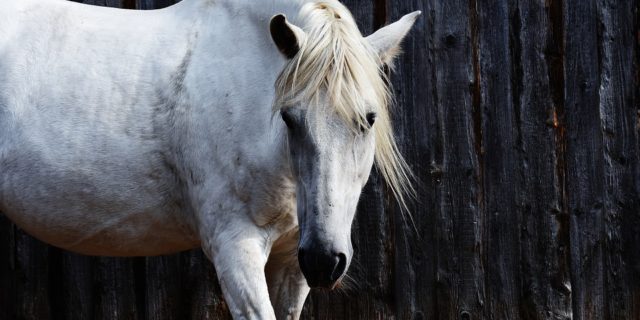
By
Tammy McKenzie
February 2017
Print Version
What you need to know
Each species of animal has its own unique perceptual world based on the structure and capacity of their various sensory modalities. This means, that how humans perceive the environment may vary greatly from how another species perceives the same environment. If humans do not take this difference of perceptual reality into account it can lead to a misunderstanding of the reasons for particular behaviours in nonhuman animal species. Humans have had a long history of interactions with horses, including using them as working animals, for recreational purposes, and as companion animals. Many accidents occur to humans and to horses every year because of their interaction with one another. The better we comprehend the perceptual world of horses, the greater understanding we have of the reasons for certain behaviours and the greater the insights we have into the best handling and training practices. Dr. McKenzie’s research program examines how horses perceive visual objects in their environment.
Why this research is important
This research program focuses on furthering humans’ understanding of how horses process visual information about objects in their environment. Several projects are currently underway that are examining different aspects of horses’ perception of their environment. One project is focusing on how horses perceive moving objects. Another is examining how horses perceive and react to a variety of human facial expressions. A third project is examining object recognition in horses. By understanding how horses perceive objects, the better humans can interpret the behaviours of horses and why those behaviours might be occurring. This information can help modify existing handling and training practices to make them safer and more effective.
How this research is being done
The projects examining object recognition and perception of moving objects are conducted using a two-key response-choice task that utilizes operant conditioning principles. When examining horses’ perception of moving objects the horses are presented with two rotating objects that are two reproductions of the same object but are moving at different speeds or in different directions. Reproductions of the same objects are used so that discrimination can be based only on speed or direction of motion. The horse is reinforced for selecting the object that is always moving one particular speed or direction (the correct response for each horse is determined prior to the start of the experiment). The horses’ rate of learning to discriminate between the two objects is examined. A similar procedure is used to examine horses’ ability to learn to discriminate between different types of objects. The research examining horses’ responses to human facial expressions involves presentation of human faces to horses in photographic format. During the presentation of the human facial expression changes in the horse’s heart rate are recorded. Behavioural changes such as approach or withdrawal from the photograph are also recorded.
How this research can be used
The information gained from this research could be beneficial in determining better training and handling practices for horses. The more knowledge that humans have about how horses perceive visual stimuli the more informed decisions we can make regarding how we interact with horses. Better informed decisions could lead to improved welfare for both the horse and rider/handler. This type of research is becoming of increasing interest as horse owners and trainers are starting to integrate traditional training techniques with information gained through the scientific investigation of the cognitive abilities of horses. This is occurring for a number of reasons including, but not limited to, the following: (1) to increase the safety of training and handling practices for both the horse and the handler/rider, (2) because of welfare concerns regarding horses such that trainers are interested in creating training techniques that have fewer aversive elements, and (3) to create more effective training techniques by developing training programs that take into consideration the learning styles and perceptual capacities of horses.
About the Researcher
Keywords
- cognition
- horse
- learning
- perception
Editor: Christiane Ramsey
Read more BU Research
Research at Brandon University follows comprehensive policies designed to safeguard ethics, to ensure academic integrity, to protect human and animal welfare and to prevent conflicts of interest.

